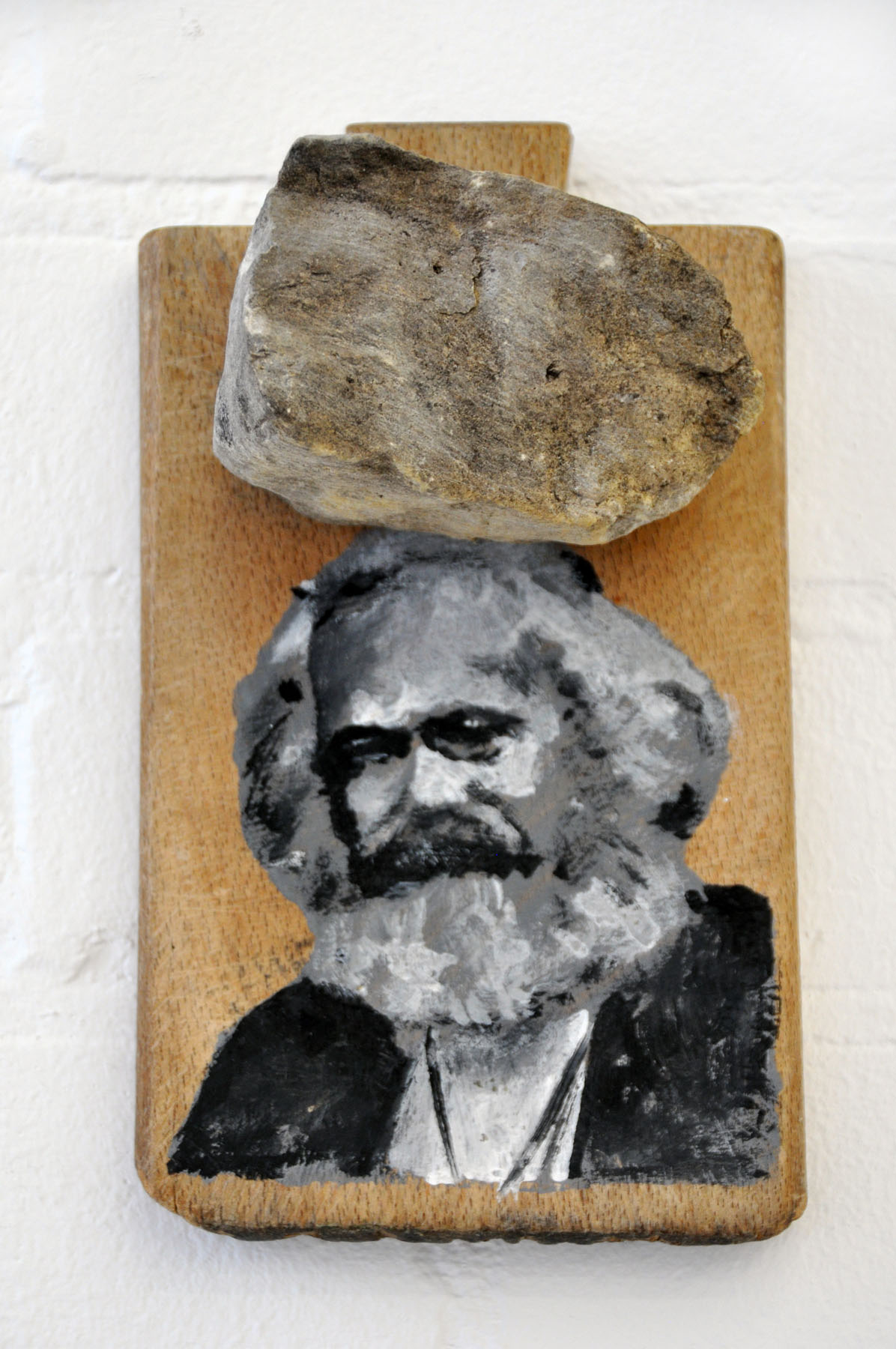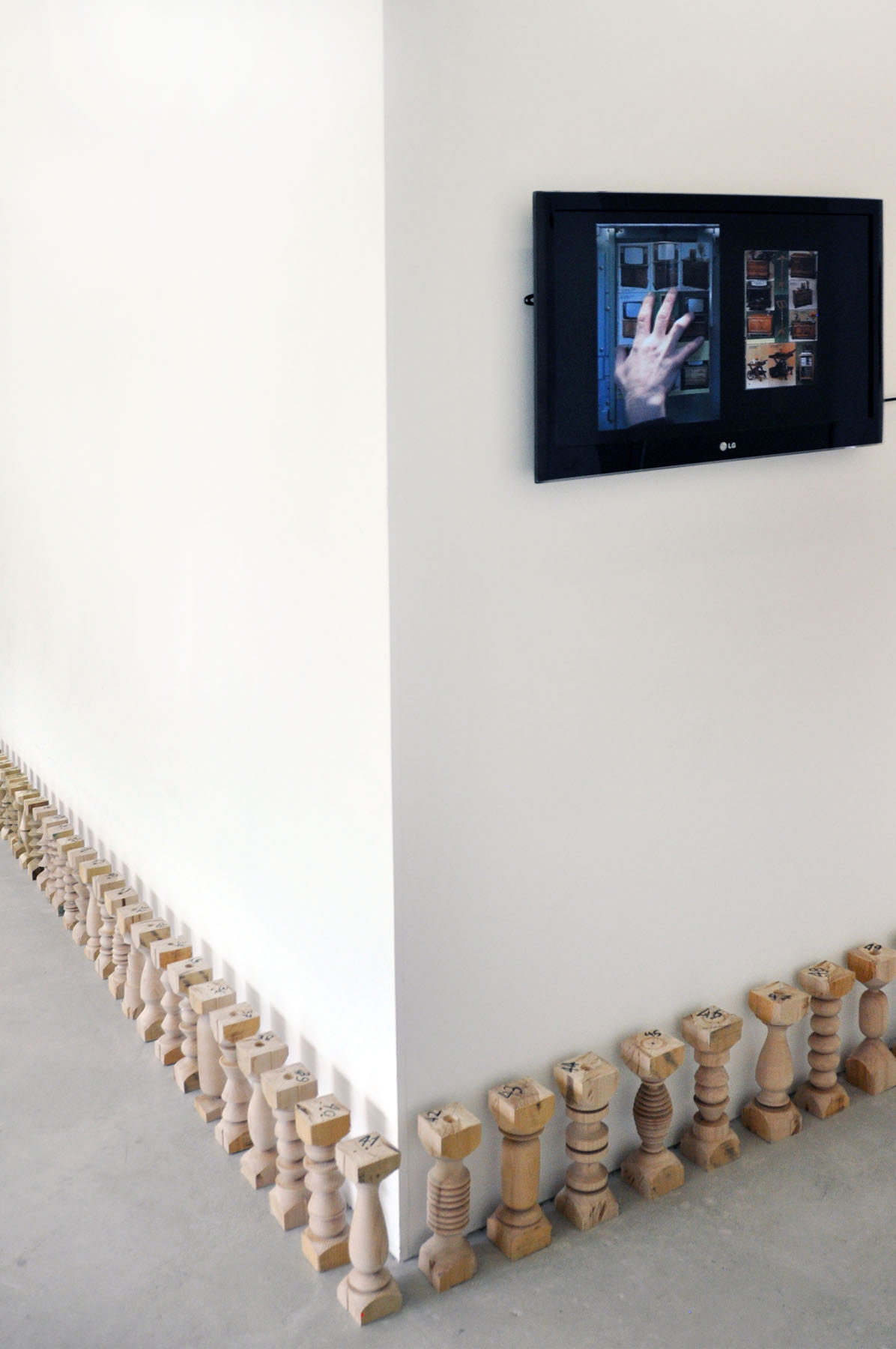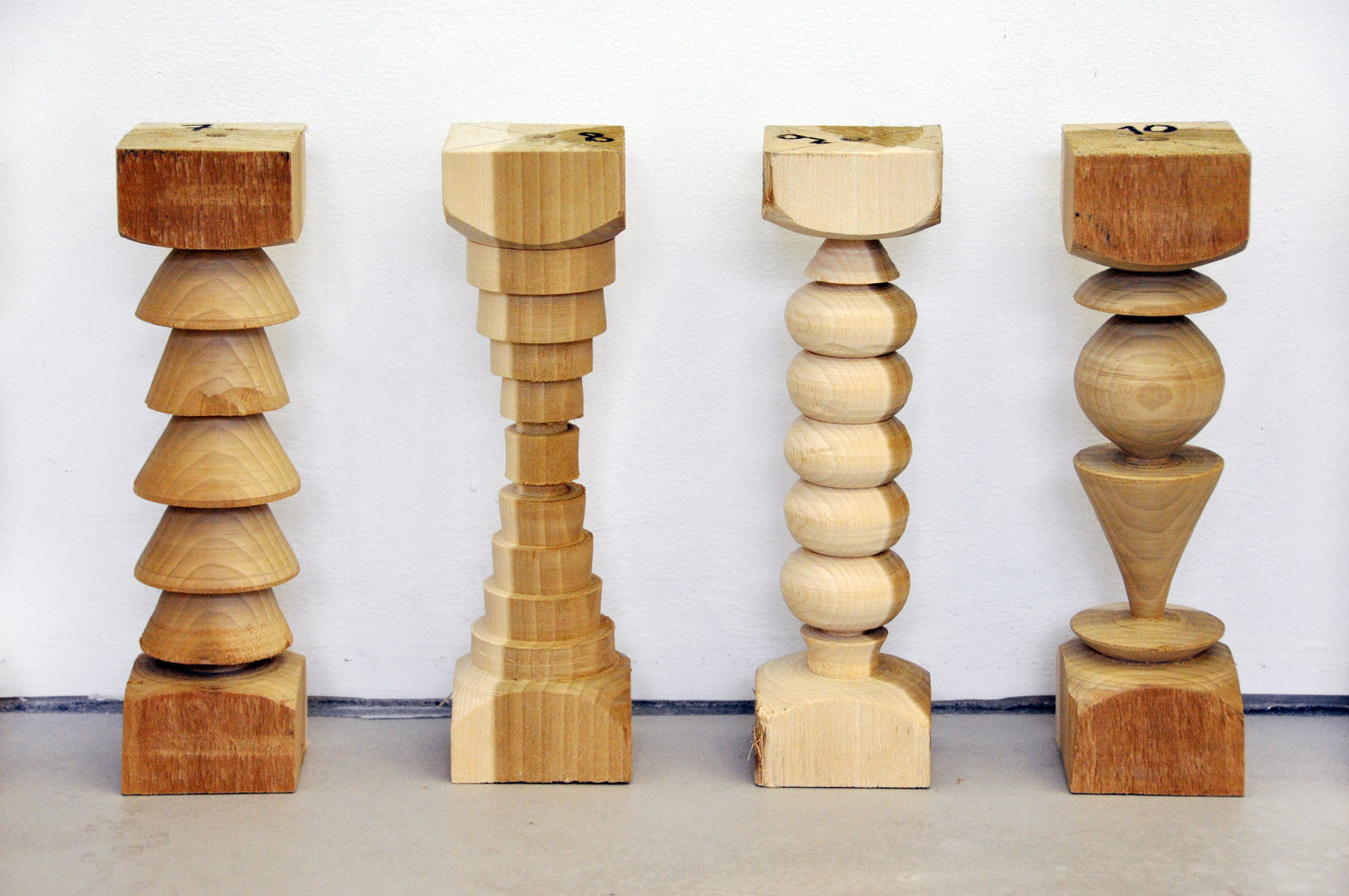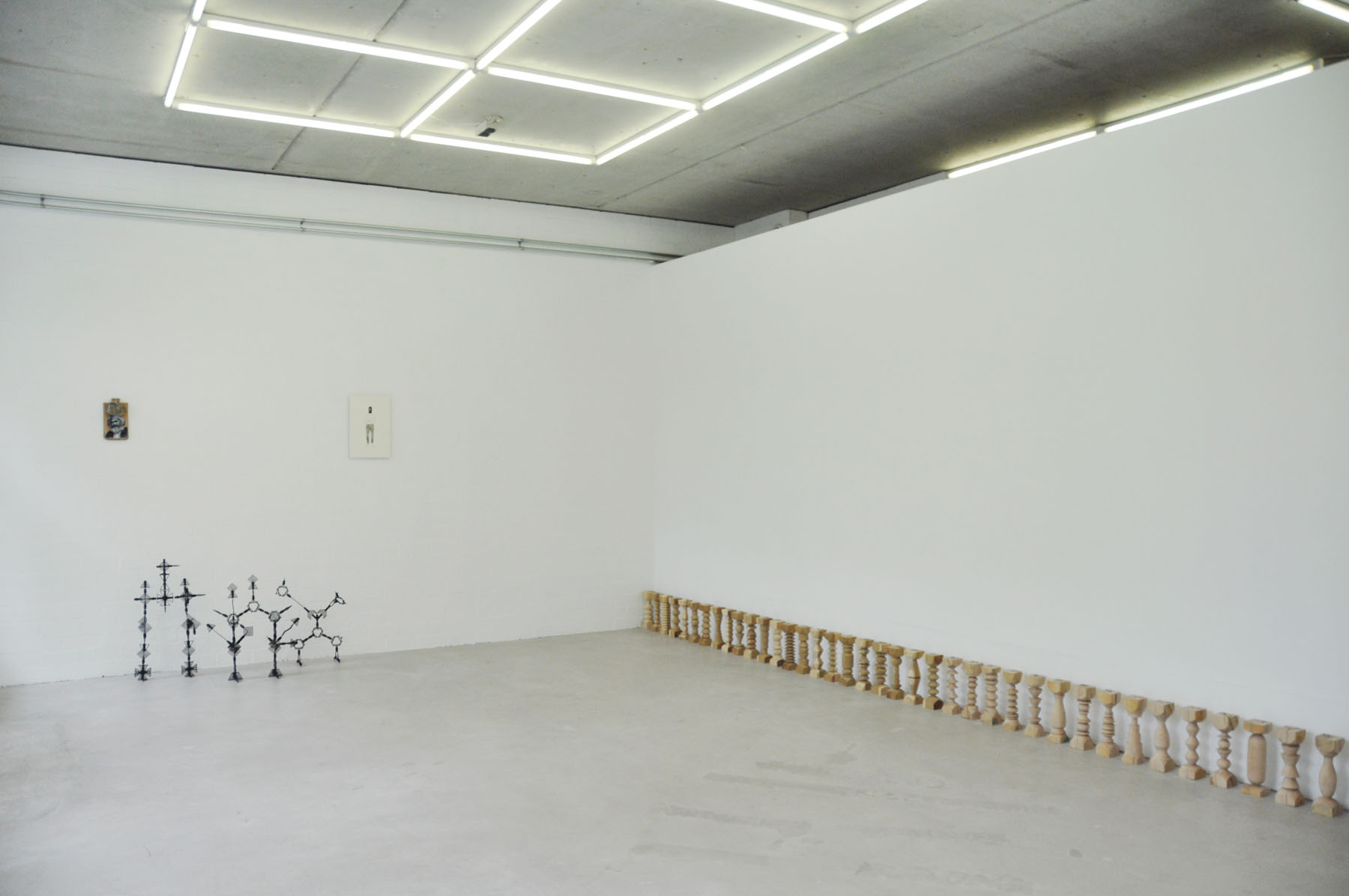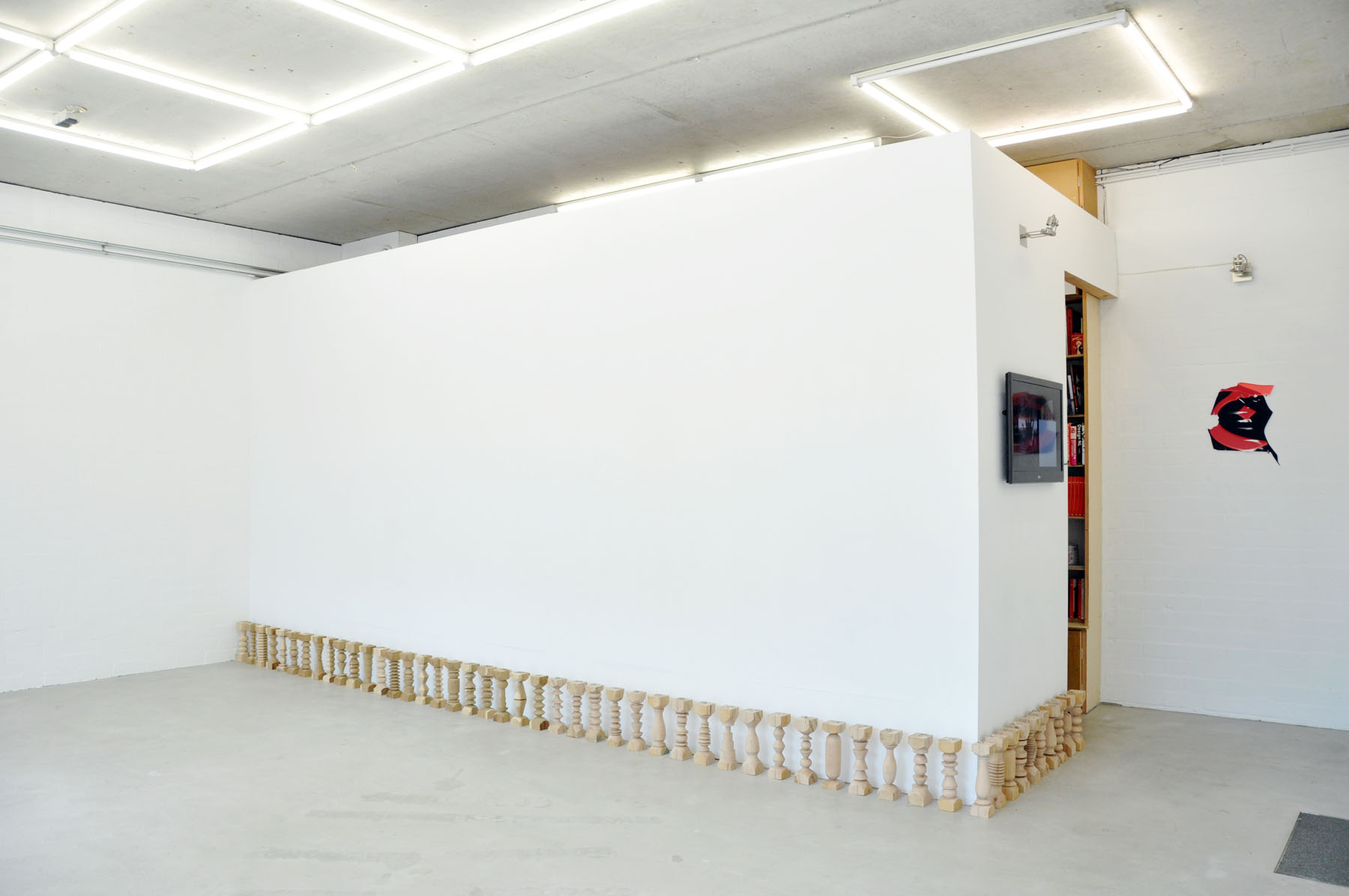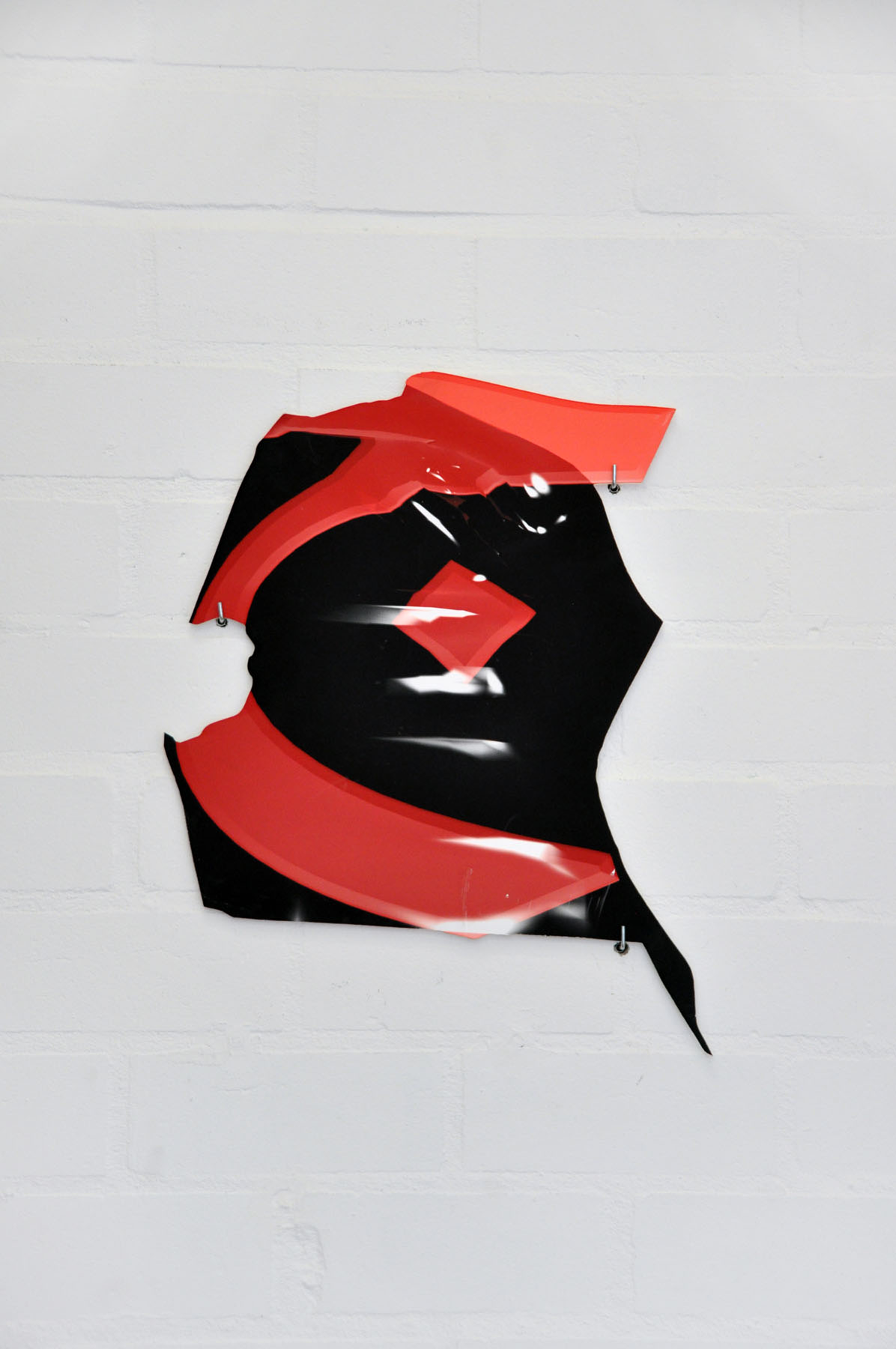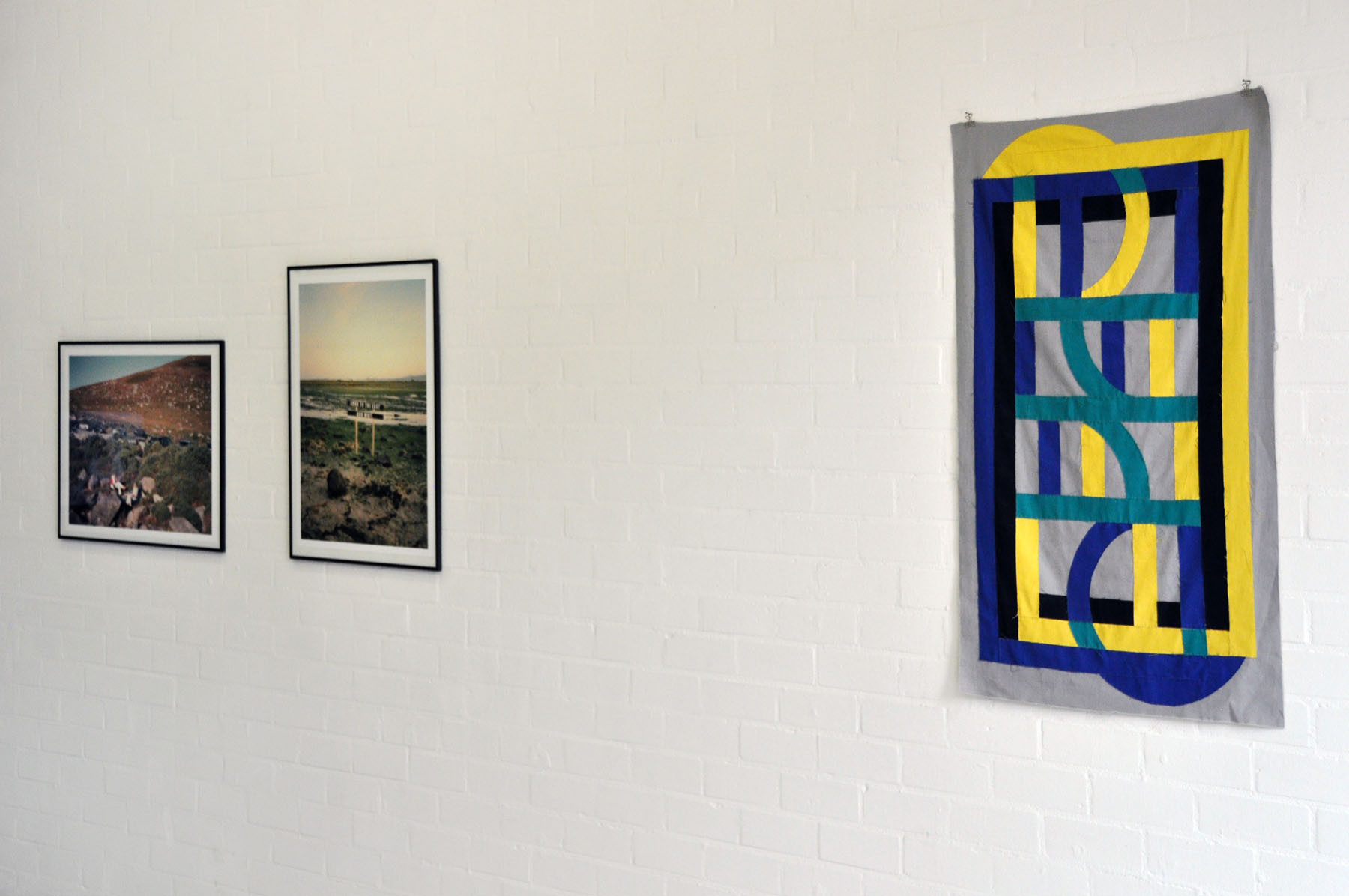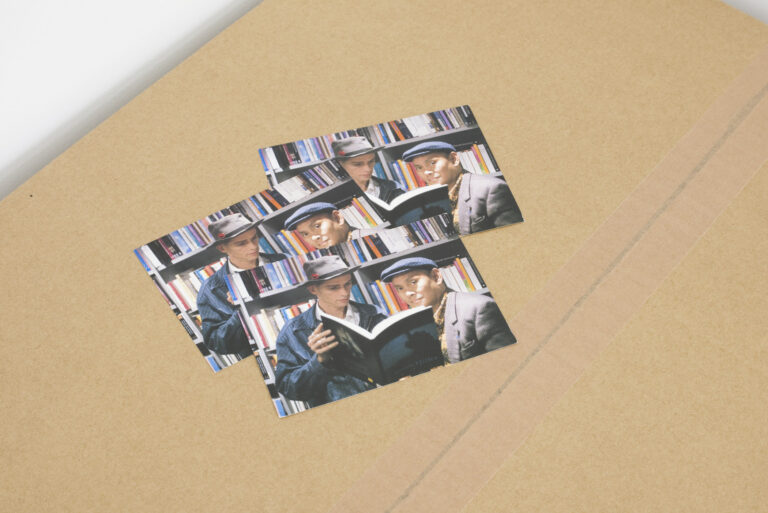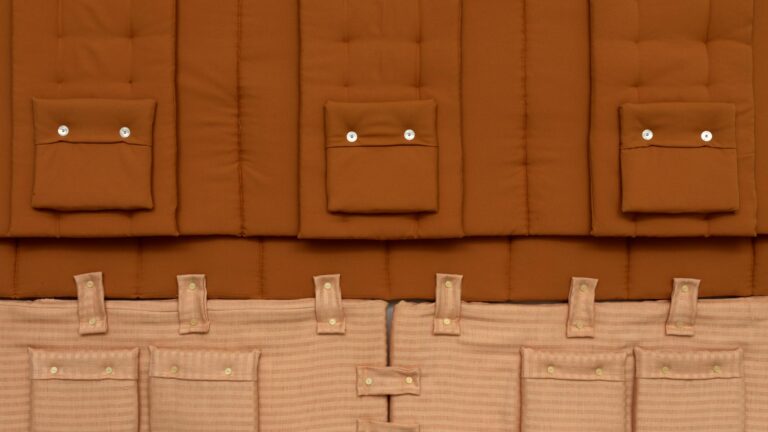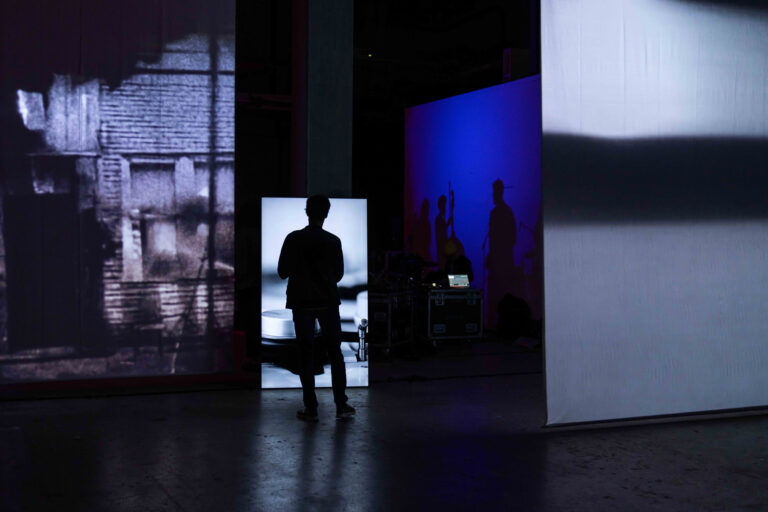Artists: Tudor Bratu, Momu & No Es, Iratxe Jaio & Klaas van Gorkum, Harm Weistra, Cihad Caner, Ilke Gers, Fotini Gouseti, Thijs Ebbe Fokkens, Yasser Ballemans, Roi Alter, Maurice Meewisse
Exhibition title: The Day After Tomorrow
Venue: JOEY RAMONE, Rotterdam, The Netherlands
Date: July 1 – September 25, 2020
Photography: all images copyright and courtesy of the artist and JOEY RAMONE, Rotterdam
JOEY RAMONE is happy to reopen the space presenting The Day After Tomorrow, a group exhibition with work by the gallery’s represented artists: Tudor Bratu, Momu & No Es, Iratxe Jaio & Klaas van Gorkum, Harm Weistra, Cihad Caner, Ilke Gers, Fotini Gouseti, Thijs Ebbe Fokkens, Yasser Ballemans, Roi Alter.
The opening of the exhibition coincides with the Rijnhoutplein Festival and especially for this occassion the gallery will present a performance/sculpture/intervention by Maurice Meewisse.
Tudor Bratu
Tudor Bratu’s Cheer Up Fellows II consists out of a series of temporary public space installations which deal with the specific relationships between public image (ie locations) and private or personalized language (thoughts). After careful selection of both texts and public sites a temporary installation is created using billboards and generative textual fragments. This installation or ‘generative atmospherical location’ is documented and, in presentation, reinstalled using photograhy, slide material, billboards and original texts.
Momu & No Es
Momu & No Es’ recent work revolves around the construction of stories, habits and routines stemming from their immediate surroundings. By questioning social roles and modifying the established rules, they propose other possible alternatives, using fiction and ingenuity to develop a series of storylines, events and fables that draw on the post-internet era. They create new discursive environments in which they mix and reinterpret imaginaries and references of popular culture. In their work they conceive characters and roles inspired from people and entities which reflect the triviality of our contemporary time. Their aesthetics become literary constructions and techniques that originate temporary subjective realities, whose foundation is the ability to sublimate the mental of the everyday, questioning the absolute truth and endless love.
Iratxe Jaio & Klaas van Gorkum
Klaas van Gorkum’s grandfather belonged to a generation for whom ‘free time’ should be spent doing something productive. Upon retiring from work, he had his former colleagues at the factory weld together a lathe for him, so that he could take up woodturning. In old age, he was able to augment his modest pensioner’s fee by selling the products of his hobby. When he died, he left his son a cigar box filled with magazine clippings, sketches and blueprints of different objects made by turning wood, with the idea that it might come in handy some day. The contents of this box have been taken as a point of departure for a self-referential exploration of the notion of artistic production.
The original machine on which the objects were made was recuperated and put back into operation. Recording their steps on video as they went along, the artists have been carrying out a series of woodturning experiments, connecting their physical actions to the productivity of the retired factory worker.
Harm Weistra
Harm Weistra’s photographic series entitled Curbed Chaos, The Beauty Beneath, show an unusual representation of everyday snapshots. By twisting their properties, the work conjures up a new reality. Although at first glance the images may seem somewhat familiar, on a closer look they are difficult to identify, depicting a reality that sidetracks our perception and mystifies the true nature of the initial image. Curbed Chaos turns failure into an opportunity. A software glitch inspired the artist to develop a procedure that is freeing him from the limitations of traditional photo editing and manipulation, leading to a personal approach that rips off the identity of the original snapshot. It results in an image that balances between reality and abstraction, inviting the viewers to charge it with a new meaning.
Cihad Caner
Cihad Caner’s What Happens to the Geographical Borders When the Land Itself Moves investigates current mass migration by focusing on the role of water and it’s image which has been distributed and given language that focuses on the “other”. The world is witnessing some of the largest refugee flows since the Second World War. Meanwhile, water crises are highlighted as one of the most pressing global challenges. In this context, migration and refugee flows are increasingly explained in terms of water scarcity perpetuated by climate change. For example, the drought of 2007-2010 in Syria as one of the main causes of the ongoing uprising and subsequent civil war, and the Mediterranean sea becoming a subsequent mode of passage for the people who had to flee. The project reveals the ecological and political aspects of water.
Ilke Gers
Ilke Gers works with installation, performance and publications that bring movement,
behaviour, social and spatial conditions into play. Trained in graphic design and with a background as a professional tennis player, her work draws together the disciplines of design and physical training to investigate the human body in designed systems. She makes physical games, open-scripted performances and public interventions to bring into play the way our movement and behaviour is choreographed by the rules and conditions of our environments, and experiment with how they can be re-imagined. Recent work explores the intersection of the structures and codes of the typographic form of language and sports fields markings, resulting in large scale language fields resembling playable game surfaces. Field#2 is part of Gers’s series of work called Organized Game, a collaboration-based game that plays with an open set of rules as score for a choreography. The field is constructed out of tape to adapt to a space where the audience can be in immediate physical proximity to the players – and therefore become physically implicated in the game.
Fotini Gouseti
For the last years Gouseti has been involved in different working environments, which often requires moving to different places and engaging herself with a variety of communities, mentalities, social classes and lifestyles. Her practice is research-based, socially engaged and often considered ‘political’. She aims for results that address a broad, not necessarily specialized audience. Predictions by Bella Kydonaki: Learning from Athens & Learning from Documenta is a video work showing astrologist Bella Kydonaki doing a reading to predict the future of an art institution (Documenta) and two related projects, as well as the future of the relationships between them. It focuses on the exhibition ‘Documenta 14 – Learning from Athens’, which transcended the confines of Documenta’s hometown of Kassel and was partially staged in Athens in 2017; and the ‘Learning from Documenta’ anthropology and art research project that took place in Athens between 2015 and 2017, which aimed at critically observing and discussing aspects of Documenta’s presence in Athens. The video was created and co-curated by Fotini Gouseti and social anthropologist Eleana Yalouri. The astrological reading took place and was filmed on September 15, 2017.
Thijs Ebbe Fokkens
The work of Thijs Ebbe Fokkens can be read as a story that alludes to scientific and religious endeavors that people undertake to get a grip on the world. His combinations of drawings, photographs, models and installations tell us of obscure moments and mysterious places. Fokkens’s scenes and situations derive from the desire to capture significance and the search for an ideal vantage point to do so, to get a good look at notions about us, about the self and the tech, about nature, time and other narratives. To orientate and position oneself in regard to such complex notions a view is needed that takes a lot of things into account simultaneously. Fokkens’ trail of thoughts and actions thus ends up creating a space, not stating a point. It’s an ambiguous space, full of promise, where nothing has come to a conclusive resolution yet. This poetic situation, this impasse that is the habitat of the work and world of the artist Thijs Ebbe Fokkens, provides the opportunity to contemplate and wonder.
Yasser Ballemans
Yasser Ballemans is interested in the role of art in rituals, such as parades, campfires, carnivals and commemorations. He researches how ornaments, decorations and “old-fashioned” techniques can be used in a contemporary way. Ballemans investigates the form language of traditional ceremonies, as seen in religious relics, floats, triumphal arches, flags, trophies, ornaments, and festive costumes in different cultures around the world. Depending on the context, his work is inspired by these forms in a playful and abstract way. He often plays with symmetry and repetition so that images are complex as well as tranquil, provoking contemplation and imagination.
The title of the work The One Electron Universe refers to the theory according which it is possible that the whole universe exists out of one single electron traveling back and forward in time. These Triumph Arches are made to celebrate inspiring values and perspectives like The One Electron Universe theory.
Roi Alter
Within his sculptural practice Alter subverts what is usually taken for granted, including social norms, common concepts and the prevalent modes of production. Next to this Alter explores the zone between the visual and performing arts. Through humour, irony and insight but also a strong desire for subversion Roi Alter’s work appear to be vital munitions in the face of contemporary society. They are but observations of the human dwelling, as full as it is with contradictory advancement and transgression, creation and destruction, purpose and vanity. It is a celebration of the world gradually becoming a dystopia, kissing human culture on the cheek, then spitting in its face.
Maurice Meewisse
Maurice Meewisse’s contribution is a performance / sculpture: the so-called ‘fire-and-forget-fire’: a hollow wooden structure that is in essence a wooden chimney that burns controlled from the inside. The sculpture itself is about the moment of origin – during the performance, the fire becomes a focal point, and the creation of the sculptural object becomes a social happening.
Roi Alter, An Approximate Portrait of Karl Marx with a Rock on his Head, 2019, Acrylics on Wood, Stone
Thijs Ebbe Fokkens, 21st Century Luddite, 2015, Graphite on paper on aluminium 29x42cm
Yasser Ballemans, The One Electron Universe, Black MDF, 50x50x70 cm
The Day After Tomorrow, Installation view at JOEY RAMONE, 2020
Iratxe Jaio & Klaas van Gorkum, “Decommission” of the installation “Producing Time in Between Other Things”, 2020, Wood, Video, 36:10min
Iratxe Jaio & Klaas van Gorkum, “Decommission” of the installation “Producing Time in Between Other Things”, 2020, Wood, Video, 36:10min
Iratxe Jaio & Klaas van Gorkum, “Decommission” of the installation “Producing Time in Between Other Things”, 2020, Wood, Video, 36:10min
Iratxe Jaio & Klaas van Gorkum, “Decommission” of the installation “Producing Time in Between Other Things”, 2020, Wood, Video, 36:10min
Iratxe Jaio & Klaas van Gorkum, “Decommission” of the installation “Producing Time in Between Other Things”, 2020, Wood, Video, 36:10min
Iratxe Jaio & Klaas van Gorkum, “Decommission” of the installation “Producing Time in Between Other Things”, 2020, Wood, Video, 36:10min
The Day After Tomorrow, Installation view at JOEY RAMONE, 2020
The Day After Tomorrow, Installation view at JOEY RAMONE, 2020
The Day After Tomorrow, Installation view at JOEY RAMONE, 2020
Cihad Caner, What Happens to the geographical borders when the land itself moves, 2017, 3D scanned object, Print on Plexiglas, Laser Cut, 38×32 cm
The Day After Tomorrow, Installation view at JOEY RAMONE, 2020
Harm Weistra, Berlin Cathedral – View from Park Hotel, 2020, Archival inkjet on Canson Infinity Edition Etching Rag 310gsm paper, Mounted on Dibond, 56 x 100 cm; Harm Weistra, Berlin Cathedral – View from Mühlendamm Bridge, 2020, Archival inkjet on Canson Infinity Edition Etching Rag 310gsm paper, Mounted on Dibond, 90 x 58,5 cm
Harm Weistra, Berlin Cathedral – View from Park Hotel, 2020, Archival inkjet on Canson Infinity Edition Etching Rag 310gsm paper, Mounted on Dibond, 56 x 100 cm; Harm Weistra, Berlin Cathedral – View from Mühlendamm Bridge, 2020, Archival inkjet on Canson Infinity Edition Etching Rag 310gsm paper, Mounted on Dibond, 90 x 58,5 cm
The Day After Tomorrow, Installation view at JOEY RAMONE, 2020
The Day After Tomorrow, Installation view at JOEY RAMONE, 2020
Ilke Gers, Organised Game, field #2, 2014, Fabric, 70x120cm
The Day After Tomorrow, Installation view at JOEY RAMONE, 2020
Tudor Bratu i.c.w Tine Melzer, Cheer Up, Fellows, Part 2, 2010-ongoing, 50 x 70 cm, Inkjet on Hahnemuehle Pearle paper; Tudor Bratu i.c.w Tine Melzer, Cheer Up, Fellows, Part 2, 2010-ongoing, 70 x 50 cm, Inkjet on Hahnemuehle Pearle paper
Tudor Bratu i.c.w Tine Melzer, Cheer Up, Fellows, Part 2, 2010-ongoing, 50 x 70 cm, Inkjet on Hahnemuehle Pearle paper
Tudor Bratu i.c.w Tine Melzer, Cheer Up, Fellows, Part 2, 2010-ongoing, 70 x 50 cm, Inkjet on Hahnemuehle Pearle paper
Fotini Gouseti icw Eleana Yalouri, Predictions by Bella Kydonaki: Learning from Athens & Learning from Documenta, 2017, video, 13’18”
Fotini Gouseti icw Eleana Yalouri, Predictions by Bella Kydonaki: Learning from Athens & Learning from Documenta, 2017, video, 13’18”
Momu & No Es, Scottex Dogs, 2020, Hahnemühle inkjet ink, 175 x 125 cm
The Day After Tomorrow, Installation view at JOEY RAMONE, 2020
Momu & No Es, Scottex Dogs, 2020, Hahnemühle inkjet ink, 175 x 125 cm
Momu & No Es, Scottex Dogs, 2020, Hahnemühle inkjet ink, 175 x 125 cm
Maurice Meewisse, Fire and Forget Fire, #7, Wood, Fire
Maurice Meewisse, Fire and Forget Fire, #7, Wood, Fire
Maurice Meewisse, Fire and Forget Fire, #7, Wood, Fire
Maurice Meewisse, Fire and Forget Fire, #7, Wood, Fire


